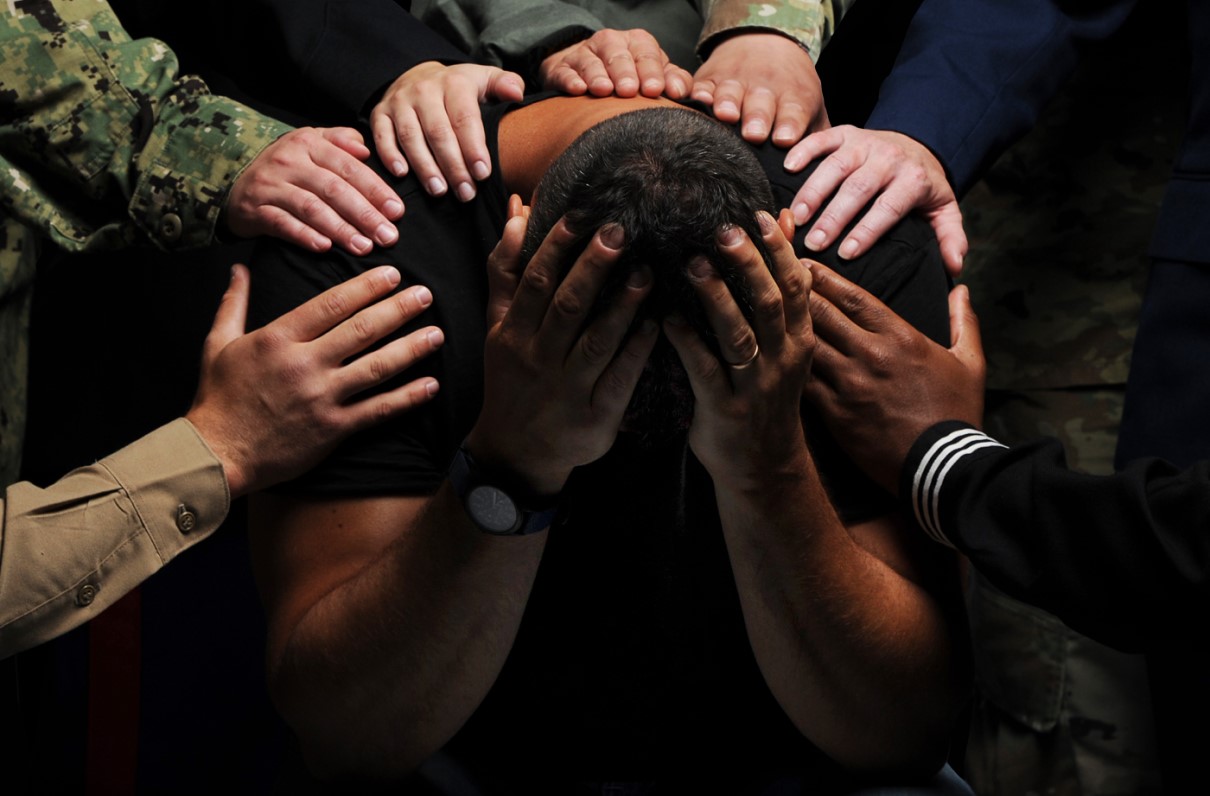Note from MOAA: If you or someone you know is in crisis, contact the Veterans Crisis Line at 1-800-273-8255 (press 1) or via www.veteranscrisisline.net.
DoD released its annual suicide report Sept. 30, and its findings are alarming: Suicide rates for active duty servicemembers continue to grow, and the report raises concerns that the current strategy to bring down rates has failed.
For perspective, it is important to note DoD lost more servicemembers to suicide than to combat in Afghanistan and Iraq. In 2020 alone, 580 servicemembers died by suicide (384 active duty members, 77 reservists, and 119 National Guard members). The active component rate in 2015 was 20.3 suicides per 100,000 servicemembers, compared with the 2020 rate of 28.7 per 100,000.
The longitudinal study of rates indicates a trend not associated directly with the repercussions of isolation from the pandemic. So what can be done to stop this increase?
Building a Strong Community
DoD’s public health approach to suicide prevention is dominated by the medical field and tends to focus on medical treatment, intervention, and safe weapons storage. Several studies – including the Army’s 2010 Health Promotion, Risk Reduction, Suicide Prevention Report and 2012’s Army 2020: Generating Health and Discipline in the Force Ahead of the Strategic Reset, works known better as the “Red Book” and “Gold Book,” respectively – have pointed to the importance of battling isolation and improving connections, and a sense of belonging.
Absent from this year’s report and discussion on the public health approach to suicide prevention is the need to improve quality of life for servicemembers on installations. Changing the physical environment on installations to foster connections and a sense of community builds personal protective factors. Initiatives to build privacy for single servicemember quarters, for example, may have had unintended consequences that increased isolation.
Community and unit activities that once fostered close bonds for servicemembers and families – such as sporting events, single servicemember trips, the old officer and enlisted club system, and a focus on esprit de corps – eroded during the recent wars. The very programs that were once a staple of battling isolation and building cohesion have fallen victim to decisions designed to support readiness requirements. Some senior leaders even prohibited sporting events – to avoid risk of injury that could hurt personnel readiness statistics.
Quality-of-life programs tackling community and living conditions such as barracks (unaccompanied housing) facilities are challenged to compete with modernization priorities under a largely flat DoD budget. Some installations are particularly challenged to improve community connectiveness, a sense of belonging, and their overall quality of life: The Army is investigating three suspected suicides at Fort Drum, New York, that reportedly took place within about a 48-hour period in mid-September.
The House version of the FY 2022 National Defense Authorization Act has provisions that would require DoD to make mandatory investments in installations such as single servicemember’s quarters. Section 2813 of the bill would require DoD to reserve a percentage of facilities sustainment funds for maintenance and improvement of (barracks) unaccompanied housing.
There is concern the services are assuming too much risk in deferred maintenance. The provision would also require a report in February 2022 on how DoD prioritization on modernization and infrastructure is used to improve the quality of life for servicemembers and how to identify critical quality of life infrastructure.
The Government Accountability Office (GAO) has questioned DoD’s effectiveness and current strategy for suicide prevention. GAO’s primary recommendation in an April report was to develop a process to ensure individual, nonclinical suicide prevention efforts are assessed for effectiveness. Mandatory annual prevention training is not well regarded by most servicemembers.
Regular Checks, Access to Care
One promising program highlighted by the Defense Suicide Prevention Office (DSPO) is a pilot program by the Army for an annual wellness check. This pilot has drawn attention to reduce the stigma for those seeking help.
The concept of an annual mental health wellness check, whether you need it or not, is likely to reduce the stigma of going to behavioral health. For years, uniformed senior leaders have communicated that treating mental health needed to be just like going to a doctor with a broken leg. With servicemembers already required to have an annual physical, the annual mental health wellness check is the next logical step to improve care.
DoD also must focus on improving access to mental health care overall following last year’s DoD Inspector General report finding access to care was a major problem:
- An average of 53% (4,415 of 8,328 per month) of all active duty servicemembers and their families who were identified as needing mental health care and referred to the purchased care system did not receive care, and the military health system did not know why.
- 7of 13 military treatment facilities (MTFs) studied, or their supporting TRICARE network, did not meet the 28-day specialty mental health access-to-care standard in each month.
There is still a lot of work to be done for the military community. Prevention is bigger than intervention or medical treatment; it’s a battle against isolation through environmental change that improves connections and a sense of belonging in communities on post.
Conditions on installations once fostered close connections. Addressing installation level change for military communities – to foster a sense of connection/community and battle isolation – is still a gap in the current strategy. As Defense Secretary Lloyd Austin wrote in his online introduction to a Sept. 30 video message marking the end of Suicide Prevention Month, “Mental health is health, full stop. … We all need counsel, community, and connection.”
MOAA will continue to advocate for improving the care and quality of life for our uniformed community. Keep up with MOAA’s latest advocacy efforts at MOAA.org/advocacy-news.
Want to Help Servicemembers in Your Community?
Learn how you can make a difference with your local chapter.

